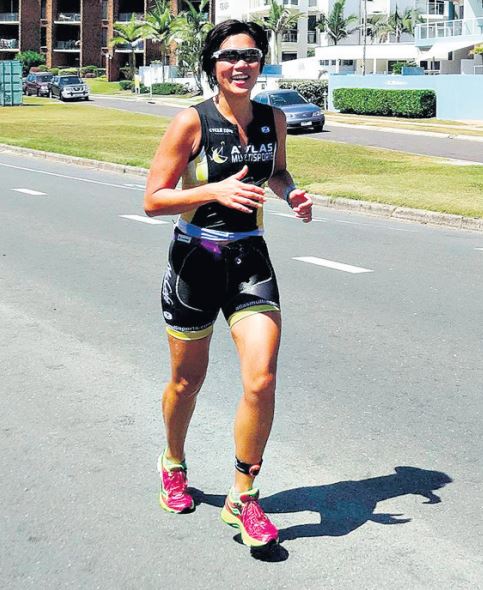
Rookies Ready to Rumble
 BEHIND these confident smiles are primed bodies brimming with nerves.
BEHIND these confident smiles are primed bodies brimming with nerves.
The five Atlas Multisports athletes are in taper mode heading into their first Ironman experience at Cairns.
It’s been a challenging battle getting to the start line, but all are excited and confident heading north for Sunday’s race.
Pivotal to their preparation has been the guidance of Atlas head coach Jason Crowther.
The ex-professional triathlete is helping a growing band of athletes attain their Ironman goals.
We caught up with Jason todiscuss how to tackle what looks like an unfathomable taskto the uninitiated.
For those considering doing their first Ironman, what is the best way to start the process?
“I recommend athletes considering their first Ironman to have completed at least three 70.3 races. Seek advice from one person and trust their judgement. Work out the amount of time that can be committed to training taking into consideration family and work commitments.”
How much training should you do?
“A 12-16 week block, between 12-18 hours/week depending on the athlete’s base, goals and other commitments.
“In the past I trained someone 12/12/12 (12 hours of training per week for 12 weeks to do a 12-hour Ironman) to test the theory, and she did an 11:47, but it takes the right kind of athlete to pull this off. It is critical the athlete understands that their goals directly correlate to the amount of dedication they are prepared to put into training.”
What are the major challenges most people face?
“The increased mileage can lead to injury and is why technique and efficiency are vital for not only getting through the training volume and to have a good race, but also longevity in the sport.
“Always sacrifice speed for technique. Race day nutrition is very important and must be practiced for weeks in training. No matter how well you’ve trained, if you get your nutrition wrong it will impact towards the end of the Ironman.
“Mental toughness is a big part of your first Ironman. Do the training and your race day experience will be memorable.
No DNFs…and remember you only do your first Ironman once so enjoy the finish chute.”
While that ticks off the training, what about the other aspects which may be secondary but no less important.
Allez Sport’s David Chick said your gear can’t be underestimated.
 What should Ironman athletes think about leading up to the day in terms of clothing?
What should Ironman athletes think about leading up to the day in terms of clothing?
“It is problematic to use anything that hasn’t been tested prior to race day.
“I like to give a new tri suit or clothing a hit out in a warm up race or in training in order to nip these potential problems in the bud. I make sure I swim in it so I know how the fabric behaves when it is wet.
“You still can’t always be sure nothing will happen because Ironman is such a long race, so if in doubt get some Bodyglide anti friction and apply it anywhere you think might be necessary.”
What are the best materials and products?
“Lightweight breathable lycra mesh is the best bet for long distance events, compression fabrics are also popular the longer the races.”
What is the best option for shoes?
“This is really a trade off between cushioning and weight.
“If you are fairly biomechanically sound and are not prone to or carrying any niggly injuries, a lighter weight shoe is often a better option race day.
“They don’t absorb and hold as much moisture which is important if you try to keep your core temperature down by pouring water on yourself through aid stations during the race.
“I suggest a good hour run in any lighter weight shoe well in advance of race day prior to racing in it.”
Are there any common mistakes athletes make?
“Most first timers get two things wrong: nutrition and pacing.
“Nutrition can take a while to dial in properly. Working out what to take, when , how much and in what combination, really means that you either have to
simulate race pace in training or do some longer races to get it right for Ironman.
“Pacing problems are avoidable and seems to largely occur on the bike when athletes are fresh and keen to take on the challenge. By the ime the run comes with these competitors, the marathon is just a ‘suffer-fest’ and the blowout in your marathon time is almost unlimited, depending on how far you dipped into the ‘well’ on the bike.”
Sunshine Coast Multisport Mecca, June 4, 2014



No Comments
Sorry, the comment form is closed at this time.